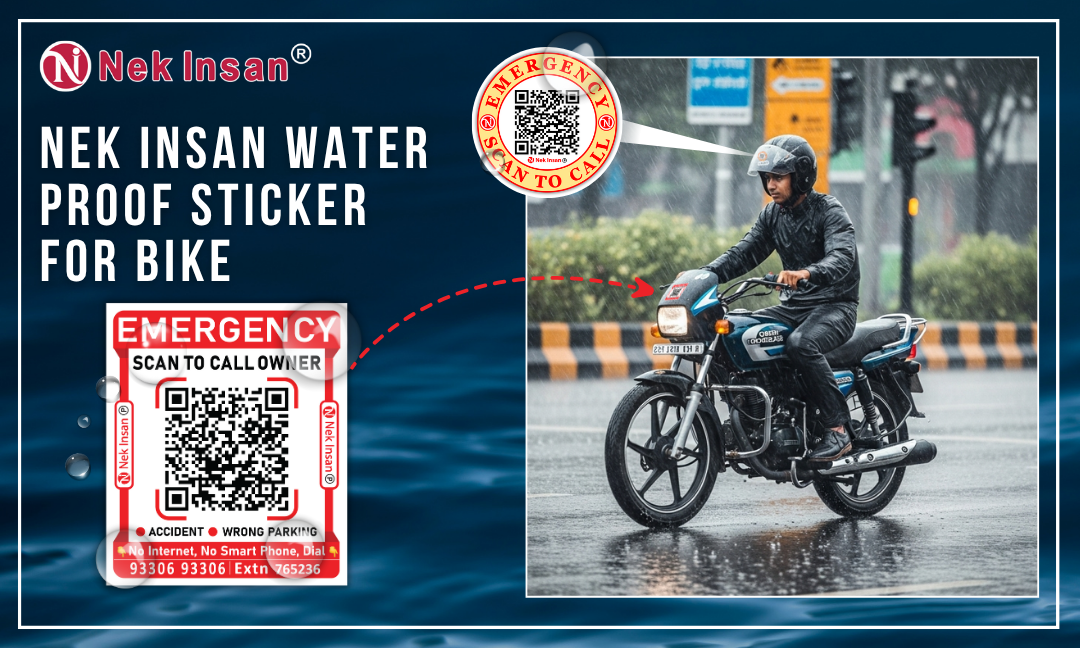Road Safety Tips
Views: 137 | Updated: 1 month, 2 weeks ago
Road safety is a shared responsibility, and following simple guidelines can significantly reduce the risk of accidents for everyone on the road, whether you're a driver, pedestrian, cyclist, or motorcyclist.
Given the context of Ghaziabad, Uttar Pradesh, India, these tips are particularly relevant for navigating the busy and diverse traffic conditions.
Here's a comprehensive list of Road Safety Tips:
I. For Drivers (Cars, Bikes, Commercial Vehicles):
- Always Wear Your Seatbelt (Car) / Helmet (Bike):
- Cars: Ensure all occupants, front and rear, wear seatbelts. It's the law and saves lives.
- Bikes/Scooters: Always wear a ISI-certified helmet, and ensure your pillion rider also wears one. Fasten the strap securely.
- Adhere to Speed Limits:
- Speeding is a major cause of accidents. Respect the posted speed limits.
- Adjust your speed according to road conditions, weather, and traffic density.
- Maintain Safe Following Distance:
- The "two-second rule" (or "three-second rule" in adverse conditions) is a good guideline. Leave enough space between your vehicle and the one in front to stop safely.
- Avoid Distractions:
- NEVER use your mobile phone while driving. This includes talking, texting, Browse, or looking at navigation on a handheld device. Use hands-free if absolutely necessary.
- Avoid eating, drinking, adjusting infotainment systems excessively, or engaging in intense conversations that take your focus off the road.
- Never Drink and Drive / Drive Under Influence:
- Alcohol and drugs impair judgment, reaction time, and coordination. Designate a sober driver, use public transport, or call a taxi/ride-sharing service.
- Understand and Obey Traffic Signals and Signs:
- Red light means stop. Green light means go (if safe). Yellow light means prepare to stop.
- Follow all road signs (stop signs, yield signs, one-way signs, no-entry signs, etc.).
- Signal Your Intentions:
- Always use indicators (turn signals) well in advance when turning, changing lanes, or exiting a roundabout.
- Be Aware of Blind Spots:
- Check your mirrors frequently and perform a head check (shoulder check) before changing lanes or turning to cover blind spots.
- Be Extra Cautious at Intersections and Junctions:
- Slow down, look both ways, and be prepared for unexpected maneuvers from other vehicles or pedestrians.
- Yield to Pedestrians and Emergency Vehicles:
- Always give way to pedestrians at zebra crossings.
- Pull over safely to the side for ambulances, fire engines, and police vehicles.
- Drive Defensively:
- Assume other drivers might make mistakes. Be prepared to react to their errors.
- Anticipate potential hazards.
- Vehicle Maintenance:
- Regularly check brakes, tires (pressure and tread depth), lights, indicators, horn, and wipers. A well-maintained vehicle is a safer vehicle.
- Avoid Aggressive Driving:
- Do not engage in road rage, tailgating, sudden braking, or unnecessary honking.
- Night Driving:
- Use low beams in city limits or when following another vehicle closely. Use high beams on open roads when there's no oncoming traffic.
- Be extra vigilant for pedestrians and cyclists.
- Watch Out for Two-Wheelers and Auto-Rickshaws:
- These vehicles are often harder to spot and may maneuver unexpectedly. Give them adequate space.
II. For Pedestrians:
- Use Footpaths/Pavements:
- Always walk on the designated footpaths. If there isn't one, walk on the extreme right side of the road, facing oncoming traffic.
- Use Zebra Crossings:
- Cross the road only at designated zebra crossings or pedestrian signals.
- Look both ways (right, then left, then right again in India) before crossing, even at a zebra crossing or traffic light.
- Obey Traffic Signals:
- Cross only when the pedestrian signal is green or when traffic has clearly stopped.
- Avoid Distractions:
- Do not use mobile phones, headphones, or other devices that distract you from your surroundings while crossing or walking near roads.
- Be Visible:
- Wear bright-colored clothing, especially at night or in low visibility conditions.
- Consider carrying a light or reflective gear.
- Never Assume:
- Don't assume a driver has seen you, even if you are on a crossing. Make eye contact if possible.
- Teach Children Road Safety:
- Supervise children closely near roads and teach them basic road safety rules from a young age.
III. For Cyclists:
- Wear a Helmet:
- Always wear a properly fitted bicycle helmet.
- Be Visible:
- Use front and rear lights (white front, red rear) at night and in low light conditions.
- Wear reflective clothing or vests.
- Obey Traffic Laws:
- Follow all traffic signals, signs, and road rules.
- Signal your turns and stops clearly with hand signals.
- Ride Defensively:
- Assume drivers may not see you. Make eye contact with drivers when possible.
- Maintain a predictable path and avoid sudden swerving.
- Maintain Your Bicycle:
- Ensure brakes, tires, and lights are in good working condition.
- Avoid Distractions:
- Do not use mobile phones or wear headphones that block out ambient sounds.
- Maintain Safe Distance:
- Keep a safe distance from parked cars (to avoid opening doors) and other vehicles.
IV. General Tips for Everyone:
- Stay Alert: Always be aware of your surroundings and other road users.
- Educate Yourself: Know the traffic laws and regulations in your area.
- Be Patient and Courteous: Road rage and impatience lead to dangerous situations.
- Report Dangerous Driving/Conditions: If you witness dangerous driving or hazardous road conditions, report them to the local traffic police or authorities.
By incorporating these practices into your daily routine, you contribute to a safer road environment for yourself and others in Ghaziabad and beyond.


